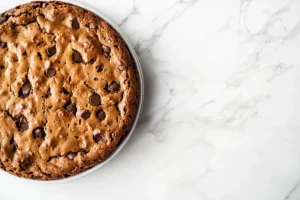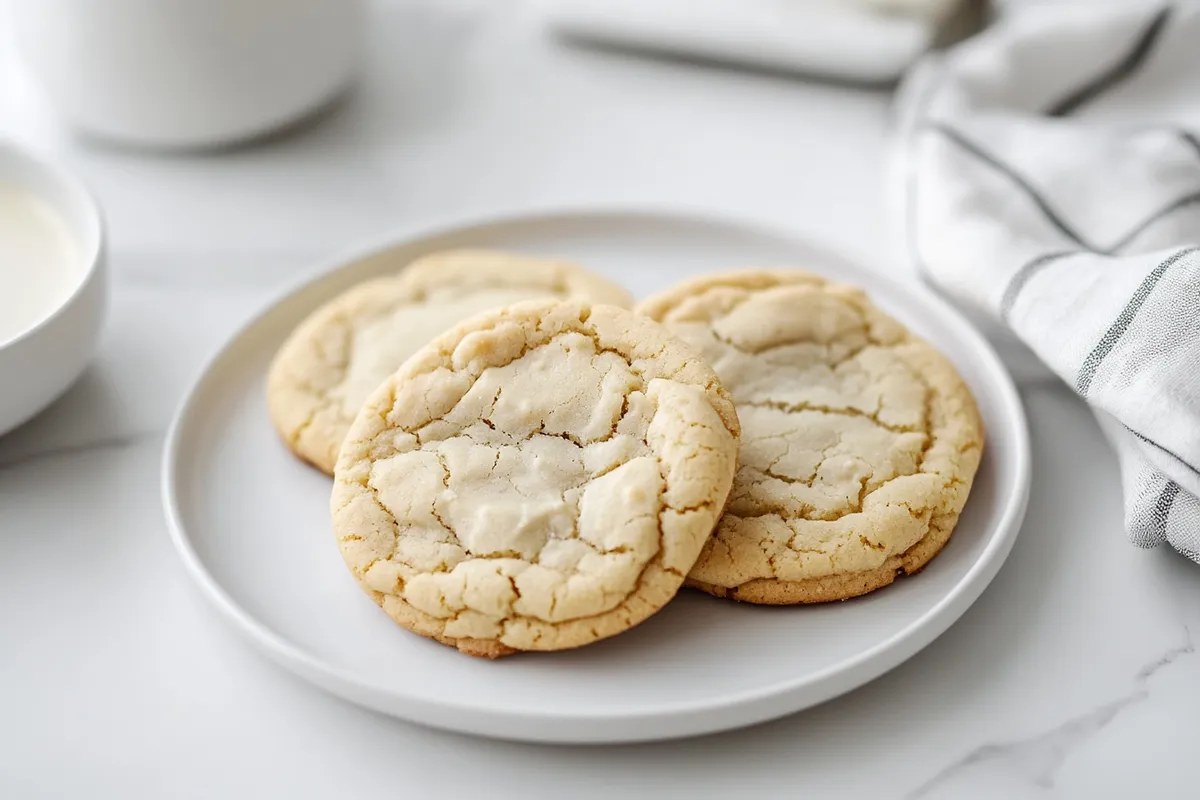Discover the delightful world of gluten-free pasta, where flavor, texture, and creativity converge to satisfy your cravings. Whether you’re navigating dietary restrictions or simply exploring new culinary horizons, gluten-free pasta opens up an array of possibilities. From hearty chickpea and lentil options to the lightness of zucchini noodles, the versatility of gluten-free pasta allows you to create dishes that cater to any palate or occasion.

As you embark on this gastronomic adventure, experimenting with different sauces, vegetables, and proteins can elevate your dishes to new heights. For those seeking an authentic Italian experience, adding a touch of homemade pesto can be a game-changer. Need some expert tips? Always cook your pasta al dente for the perfect bite and consider using a mix of gluten-free flours to achieve the ideal texture. With just a bit of creativity and passion, you can transform simple ingredients into remarkable culinary masterpieces!
Ingredients for recipe gluten free pasta:
Crafting the perfect batch of gluten-free pasta requires a selection of quality ingredients. This recipe serves 8-10 people, making it ideal for family gatherings or meal prep. Here’s what you will need:
Gluten-Free Flour Base
- 4 cups of gluten-free all-purpose flour
- 1 cup of tapioca flour (also known as cassava flour)
- ½ cup of brown rice flour
- 2 teaspoons of xanthan gum (or guar gum)
Hydration and Flavor Enhancers
- 4 large eggs
- 2 tablespoons of olive oil (extra virgin for flavor)
- 2 teaspoons of salt (sea salt preferred)
Liquid Components
- ½ to 1 cup of warm water (adjust based on dough consistency)
For added flavor and nutrition, consider incorporating the following optional ingredients:
- 1 tablespoon of dried herbs (such as oregano or basil)
- 1 teaspoon of garlic powder or onion powder for enhanced taste
Optional Ingredients for Texture and Variety
You might also want to experiment with different types of gluten-free flour for unique flavor profiles:

- Chickpea flour: Substitute up to 1 cup of the gluten-free all-purpose flour.
- Quinoa flour: Implement ½ cup for a nuttier flavor.
Lastly, if you prefer a richer flavor, try using:
- 2-3 tablespoons of beet or spinach puree to create vibrant colored pasta.
- 1 tablespoon of fresh lemon juice to brighten the flavors.
Remember, when crafting your gluten-free pasta, the key is to achieve a smooth and elastic dough while ensuring it has a delightful texture. Feel free to mix and match these ingredients to discover your personalized version.
[BODY_IMAGE]
How to prepare recipe gluten free pasta:
Making gluten-free pasta can seem challenging, but with the right steps, you can create a delicious dish at home. Follow these instructions carefully for the best results.
Gather Your Ingredients
Start by collecting all the necessary ingredients. You will need:
- 2 cups gluten-free all-purpose flour
- 3 large eggs
- 1 teaspoon salt
- 1 tablespoon olive oil
- Water (as needed)
Combine Dry Ingredients
In a large mixing bowl, add the gluten-free all-purpose flour and salt. Mix these dry ingredients thoroughly using a whisk to ensure even distribution.
Add Wet Ingredients
Make a well in the center of the flour mixture. Crack the eggs into this well and add the olive oil. Use a fork to gently beat the eggs, incorporating the flour gradually.
Knead the Dough
Once combined, use your hands to knead the dough. Knead until the dough becomes smooth and elastic, about 5 to 7 minutes. If the dough is too dry, add water one tablespoon at a time; if it’s too sticky, sprinkle a little more flour.
Rest the Dough
Wrap the kneaded dough in plastic wrap. Allow it to rest at room temperature for 30 minutes. This step helps the gluten-free flour hydrate and will enhance the texture of your pasta.
Roll Out the Dough
After the resting period, divide the dough into two or four manageable portions. Use a rolling pin to flatten each piece on a lightly floured surface until it reaches your desired thickness.
Cut the Pasta
Using a sharp knife or a pasta cutter, cut the rolled-out dough into your preferred shape—fettuccine, tagliatelle, or lasagna sheets work well. Dust the cut pieces with a bit of flour to prevent sticking.
Cook the Pasta
Bring a large pot of salted water to a boil. Add the fresh pasta and cook for about 2 to 4 minutes. Taste to ensure it’s cooked to your liking. Fresh gluten-free pasta cooks faster than traditional pasta.
Drain and Serve
Once cooked, drain the pasta and serve immediately with your favorite sauce or ingredients. Enjoy your homemade gluten-free pasta!
Tips for the Perfect Recipe Gluten Free Pasta
Making gluten free pasta at home can be fulfilling, and with a few tips, you can perfect your technique. Follow these guidelines for a delightful cooking experience.
Choose High-Quality Ingredients
The key to great gluten-free pasta lies in the quality of your ingredients. Use a blend of gluten-free flours like rice, almond, or chickpea flour. Look for brands known for their gluten-free products to ensure the best texture and flavor. Fresh eggs enhance richness, so they are worth the investment if your recipe calls for them.
Maintain the Correct Temperature
Temperature plays a crucial role in cooking pasta. Start with a large pot of cold water and bring it to a rolling boil before adding your gluten-free pasta. Stir it gently to keep it from sticking together. Cook the pasta according to the package instructions, but always check a minute or two earlier. Gluten-free pasta can overcook quickly, leading to a mushy texture.
Use Proper Cooking Techniques
When cooking gluten-free pasta, timing is everything. Set a timer and give it a stir occasionally. If you’re making a homemade variant, allow the water to return to a boil after you’ve added the pasta. This way, it helps maintain a consistent cooking temperature. Taste test frequently to find that perfect al dente bite.
Consider Dietary Substitutions
If you have dietary restrictions, there are several alternatives. For a vegan version, replace eggs with a flaxseed or chia seed mixture. Combine one tablespoon of either seed with three tablespoons of water and let it sit until gelatinous. For those avoiding nuts, opt for a blend of rice flour and tapioca for a gentle flavor and soft texture.
Enhance Flavor with Additives
Experimenting with spices or herbs can elevate the taste of your gluten-free pasta. Try adding a pinch of salt or a splash of olive oil into the cooking water. You might also toss in some garlic powder or fresh basil for an aromatic touch. Traditional Italian seasonings like oregano and thyme can also provide a delightful flavor boost.
By focusing on quality ingredients and cooking techniques, you can elevate this dish. Embrace creativity and adjust based on your dietary preferences. Enjoy the journey of making your pasta and savor each bite!
Storage Tips for recipe gluten free pasta:
Properly storing your gluten-free pasta helps maintain its freshness and flavor. Follow these tips to enhance shelf life and ensure top quality.
Keep it in a Cool, Dry Place
Store your gluten-free pasta in a cool, dry area away from direct sunlight. An airtight container or the original packaging works well for long-term storage. Ensure that the container is sealed tightly to prevent moisture from entering, which can cause mold or spoilage.
Optimal Temperature Settings
Maintain a temperature between 50°F and 70°F (10°C to 21°C) for the best storage conditions. Avoid placing the pasta near heat sources, such as ovens or stoves, as this can deteriorate its quality.
Avoid Humidity
Humidity can significantly impact gluten-free pasta. For long-term storage, consider using desiccants in the container to absorb excess moisture. If you live in a particularly humid climate, check the contents regularly for any signs of spoilage.
Freeze for Extra Longevity
If you want to extend the life of your gluten-free pasta, freezing is an excellent option. Place the pasta in a freezer-safe bag, removing as much air as possible. Properly stored, it can last for up to three months in the freezer. To use, simply thaw it in the refrigerator overnight before cooking.
Check Expiration Dates
Always check expiration dates when purchasing gluten-free pasta. Opt for fresher packages whenever possible. After opening, aim to use the pasta within a few months for optimal taste. Write the date on the container when you open it, so you know how long it’s been stored.
Signs of Spoilage
Inspect your gluten-free pasta regularly. Look for discoloration, an off smell, or visible signs of mold. If you notice any of these signs, discard the pasta immediately. Maintaining good storage practices helps you avoid food waste.
By adhering to these storage tips, you can keep your gluten-free pasta tasty and fresh for your next meal. Enjoy cooking and creating delicious dishes that are both nourishing and satisfying.
Related Recipes for Gluten-Free Pasta Lovers
If you enjoy making gluten-free pasta, you might also love these related recipes. They feature similar ingredients or cooking techniques, making them great options to accompany or enhance your gluten-free pasta dish.
First, consider trying a Gluten-Free Pesto Sauce. This vibrant sauce uses fresh basil, garlic, pine nuts, and Parmesan cheese blended together. It complements gluten-free pasta beautifully by adding a burst of flavor. Preparing pesto is quick and requires minimal cooking, making it an ideal choice for a weeknight dinner. The creamy texture of the sauce clings to each strand of pasta, delivering a delightful taste in every bite.
Next, you might enjoy Zucchini Noodles, often known as “zoodles.” They provide a light, healthy alternative to traditional pasta. You simply spiralize fresh zucchini and lightly sauté them for a quick side dish. Zoodles pair exceptionally well with a variety of sauces, including marinara or olive oil, enhancing your gluten-free meal while keeping it low in carbs.
Another fantastic option is Stuffed Bell Peppers. By filling bell peppers with seasoned ground meat and gluten-free grains like quinoa or rice, you create a filling and nutritious dish. The warm, tender peppers serve as a beautiful vessel for the flavors, making them a delightful accompaniment to your pasta dish.
These recipes not only enrich your dining experience but also maintain the dietary needs of those avoiding gluten. Mix and match these dishes to create a well-rounded, satisfying meal that everyone will love. Enjoy experimenting with these complementary flavors, ensuring a rewarding culinary adventure!
Frequently Asked Questions:
What is the best flour to use for gluten-free pasta?
When preparing a gluten-free pasta dish, the choice of flour is crucial for achieving the right texture. Popular options include almond flour, rice flour, and chickpea flour, each offering unique flavors and characteristics. Many home cooks find that a blend of these flours provides a better consistency, closely resembling traditional pasta. Additionally, using xanthan gum or guar gum in the dough can help bind the ingredients, giving the pasta a more authentic chewy quality.
Can I make homemade gluten-free pasta without a machine?
Absolutely! Homemade gluten-free pasta can be rolled out by hand. After mixing your gluten-free pasta recipe, simply flatten the dough between two pieces of parchment paper using a rolling pin. Make sure to dust frequently with gluten-free flour to prevent sticking. Using a sharp knife or a pizza cutter, cut the pasta into your desired shapes, whether it’s fettuccine, lasagna sheets, or even ravioli.
How do I cook gluten-free pasta properly?
Cooking gluten-free pasta requires special attention to avoid it becoming mushy. Bring a large pot of salted water to a vigorous boil, then add your pasta. Timing is key; it typically cooks faster than traditional varieties, usually in about 5 to 7 minutes. Stir occasionally and taste a piece a minute or two before the package suggests. Drain promptly and toss with sauce, as gluten-free pasta can stick together if left too long in the colander.
Can I freeze gluten-free pasta?
Yes, gluten-free pasta can be frozen both before and after cooking. For uncooked pasta, allow it to dry slightly on a floured surface, then place it in an airtight container or freezer bag. For cooked pasta, ensure it cools completely before transferring it to the freezer. When ready to use, simply boil or sauté from frozen. However, note that the texture may differ slightly upon reheating.
Is gluten-free pasta suitable for everyone?
While gluten-free pasta is designed for those with celiac disease or gluten sensitivity, it can be embraced by anyone looking to reduce gluten in their diet. However, it’s important to monitor the ingredients, as some variations might still contain allergens. Always check labels when buying store-bought gluten-free pasta, especially if you have issues with other allergens, such as nuts or dairy.
What sauces pair well with gluten-free pasta?
Gluten-free pasta is highly versatile and pairs beautifully with a wide array of sauces. Fresh tomato-based sauces, creamy Alfredo, or simple olive oil and garlic blends enhance the flavors of gluten-free noodles. Adding fresh herbs, roasted vegetables, or protein like grilled chicken or shrimp can elevate the dish further, making it delightful for both gluten-free individuals and pasta lovers alike.
Conclusion:
In summary, this gluten free pasta recipe stands out for its simplicity, making it an ideal choice for both novice and seasoned cooks. With just a few basic ingredients, you can whip up a delicious and satisfying meal in no time. The versatility of gluten free pasta allows for a wide range of customizations—whether you prefer bold flavors or light, fresh options. Don’t hesitate to experiment with various sauces, vegetables, or proteins to create a dish that perfectly suits your palate. Remember, the key to success is in the balance of your ingredients and cooking techniques. Embrace the flexibility this pasta offers, and transform your meals into delightful culinary experiences while adhering to gluten-free dietary needs. Dive into your kitchen and enjoy the rewarding process of creating your own unique version of this scrumptious gluten free pasta!

